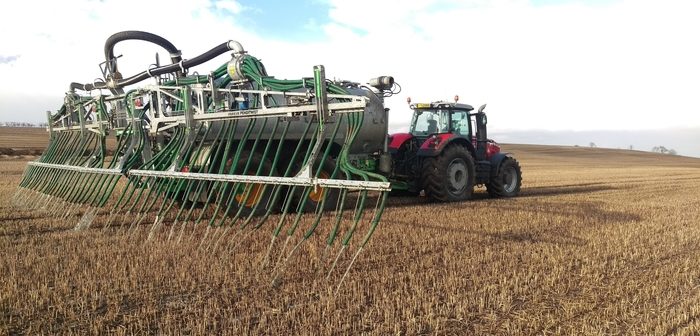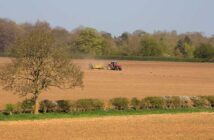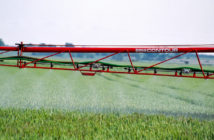A range of soil types across individual fields has dictated a precise approach to manure management on Shotford Hall Farm, near Harleston in Norfolk, which is a mixed enterprise comprising of 800 ha of arable cropping and over 300 head of stock.
“We farm the arable side on a contract agreement with some additional contracting with a sugar beet harvester and a forage wagon. We milk 140 cows with all year round calving and also breed our own dairy replacements. We run a small beef suckler herd of around 25 Herefords, says Josh Lewis, who runs the Lewis Partners farming business with his father and grandfather.
Mr Lewis explains that all of the muck from the livestock is used on the arable cropping. “We never have to buy in any artificial fertiliser, whilst successfully maintaining and building soil indices where needed.”
He points out that one of his biggest challenges with this system is ensuring that he is accurate with the application and levels of FYM and slurry, whilst remaining compliant.
“Farming in the Waverny Valley means that we have a lot of fields with a range of soil types; fields tend to be blue clay on the slope and sand at the bottom.”
“Clearly we can’t just blanket apply the FYM or slurry as otherwise we would not be compliant, but it needs to be tailored to the soil type to make the most out of it.”
Mr Lewis has tackled this by using Omnia Precision for the farm’s manure management planning. “Being able to input all of the livestock we have on the farm into Omnia means that we know the quantity of muck that we are producing and when we import muck onto the farm we know how much we can import and still be within our legal requirements.”
“We chose the Omnia system as its very user friendly and we really like the user interface which is based on maps. Crucially, it allowed us to input all of our old data that we have gathered over many years such as soil indices so we didn’t waste historical data.”
“As far as farm assurance goes it’s very straightforward as all of the necessary legal documents are in one place with the required information on when, where and what rate the muck was applied, and everything in-between,” he says.
Omnia has been designed to meet all the necessary legislative requirements for livestock manures, digestate covering field and farm limits, field spreading areas, risk maps and storage requirements, points out Mr Lewis’ agronomist, Tom Rouse of Agrivice.
“Within these legal boundaries, the system will allow the user to produce organic manure maps for each field. This can be overlaid by a map layer of the field that is broken down into soil types; thereby ensuring that FYM or slurry is only applied to the soils that need it.”
Mr Lewis is also looking at using Omnia Precision for variable rate drilling and is in the process of creating variable rate seed plans for all of the cereals using an updated Vaderstad Rapid drill. He already uses variable rate drilling for his OSR using a Vadertsad biodrill on the back of a Vaderstad topdown.”
“This will give us another layer of precision as we will be able to tailor seed rates to soil type, as well as P and K indices. We will do this by drawing up maps of each layer; soil type, nutritional indices etc from which Omnia will generate a variable rate seeding plan that has taken all of this into account.”
“So for example, on one particular 16 ha field we have three different soil types: sand at the bottom, blue clay on the hill and a clay loam on the top – all which have different P and K indices. By generating zones through Omnia we can target the FYM and slurry to the zones with the lower indices thereby keeping the field as consistent as possible, and not applying it where it is not needed. “




